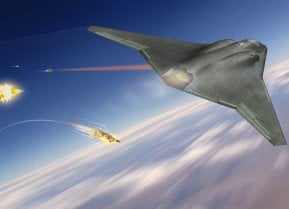You Sank My Battleship: Why the U.S. Navy Keeps Sinking Old Warships
This summer, the U.S. Navy conducted SINKEX drills, where three decommissioned warships were sunk during live-fire exercises, including the USS Dubuque and USS Tarawa.
Summary and Key Points: This summer, the U.S. Navy conducted SINKEX drills, where three decommissioned warships were sunk during live-fire exercises, including the USS Dubuque and USS Tarawa.
-These exercises date back to the 19th century and have been used to test new weaponry and tactics.
-Notably, historic tests like the 1923 bombing of battleships by Brig. Gen. Billy Mitchell and the 1946 nuclear tests at Bikini Atoll demonstrated the effectiveness of airpower and nuclear weapons against naval vessels, shaping modern naval strategy.
-SINKEX drills continue this tradition, providing valuable training and data for future conflicts.
How SINKEX Drills Prepare the U.S. Navy for Future Conflicts
This summer, the United States Navy saw three of its warships sunk – but not by Houthi missiles or drones, and certainly not by any "advanced" Russian fighter. It wasn't Chinese "carrier missiles" used to send the vessels to the sent to the bottom. Rather, the vessels were retired warships that were employed in carefully planned SINKEX drills.
"SINKEX, short for 'sink at-sea live-fire training exercises,' is a program run by the United States Navy that arranges for decommissioned Naval warships to be used in live-fire training. This gives Navy personnel the opportunity to use real ammunition on practical targets and apply what they learn to future conflict, practicing gunnery, missile drills, torpedo accuracy, and even special warfare operations," explained the U.S. Department of Transportation’s Maritime Administration (MARAD).
Two of the vessels – the decommissioned Austin-class amphibious transport dock ex-USS Dubuque (LPD-8) and the amphibious assault ship ex-USS Tarawa (LHD-1) – were sunk during the recently concluded Exercise Rim of the Pacific (RIMPAC). Both of the retired U.S. Navy warships were sunk in waters 15,000 feet deep, more than 50 nautical miles off the northern coast of the Hawaiian island of Kauai.
These were far from the first warships to be used as targets.
The Origin of Floating Targets
It has been lost to the annals of time as to what the earliest warship sunk as a target might have been, and no doubt Nordic sailors may have employed a damaged long boat as a target, while it is likely a retired vessel was employed in the Far East to test early cannons.
What we do know is that La Pacificateur, a French Navy Bucentaure- class 80-gun ship of the line, was used as a target in 1824 during tests of the Paixhans howitzer. The test was a huge success, ushering a new era of guns that fired exploding shells but also signaling the end of wooden hulled warships.
All or Nothing
Nearly a century later, a former battleship was used in a similar test.
Imperial Germany's High Seas Fleet was largely intact at the end of the First World War, and interned at the British naval base at Scapa Flow, where German Rear Admiral Ludwig von Reuter ordered the warships to be scuttled. However, a handful of vessels were saved – including the battleship SMS Baden.
As the largest and most powerful armed battleship of the Imperial Navy, SMS Baden was employed as a gunnery target for the Royal Navy in August 1921. It was concluded that the warship's armor wasn't able to stop armor-piercing shells, which resulted in the Royal Navy's switch to all or nothing armor for its battleships.
Targets for Aircraft
Just two years after SMS Baden was sunk, a pair of retired U.S. Navy battleships – the USS Virginia (BB-13) and USS New Jersey (BB-16) – were expended as target ships on September 5, 1923, during bombing tests under the command of Brig. Gen. William "Billy" Mitchell off Cape Hatteras.
The tests were carried out to prove the effectiveness of aircraft against large surface combatants – and the results were far from what the U.S. Navy hoped to see. Thirteen 1,000-pound bombs dropped from 3,000 feet sank BB-13 in less than 30 minutes, while BB-16 was seriously damaged and then sunk in a subsequent sortie later that same day.
At a Crossroads
Perhaps the most notable use of retired warships as targets occurred in 1946 during Operation Crossroads, the series of U.S. nuclear tests conducted at Bikini Atoll. A total of 95 target ships including the ex-USS Nevada (BB-36), the German heavy cruiser Prinz Eugen and the Japanese battleship Nagato were employed as targets.
However, during the Able test the atomic bomb missed its aim point in the target array – which was to have been BB-36 – and a result five target ships were sunk and more than a dozen more seriously damaged. The Japanese battleship was the only ship in the 1,000 yard radius that sustained moderate rather than serious damage.
Nine more vessels were sunk in the Baker test, including the U.S. Navy aircraft carrier USS Saratoga (CV-3). Though the German heavy cruiser Prinz Eugen survived both atomic bombs, but was contaminated with radioactive fallout. The ship capsized at the Kwajalein Atoll and remains there today.
Author Experience and Expertise: Peter Suciu
Peter Suciu is a Michigan-based writer. He has contributed to more than four dozen magazines, newspapers, and websites with over 3,200 published pieces over a twenty-year career in journalism. He regularly writes about military hardware, firearms history, cybersecurity, politics, and international affairs. Peter is also a Contributing Writer for Forbes and Clearance Jobs. You can follow him on Twitter: @PeterSuciu. You can email the author: [email protected].
Image Credit: Shutterstock.


